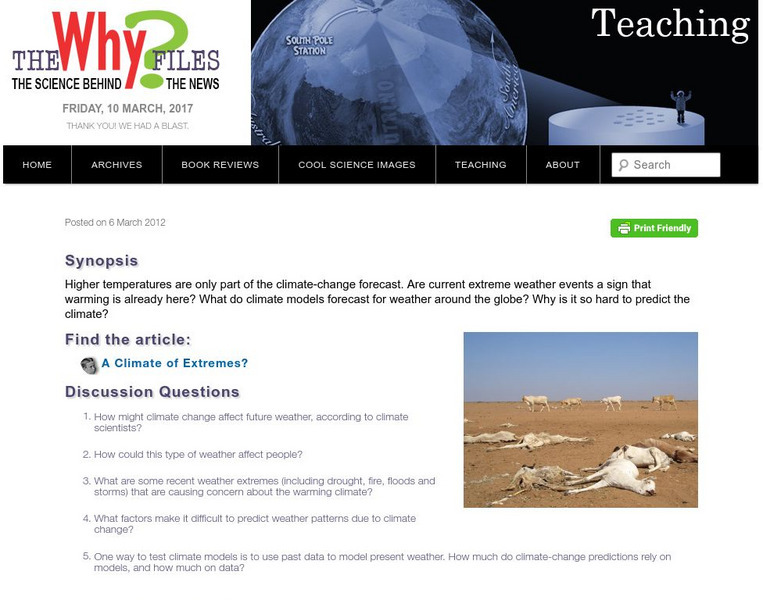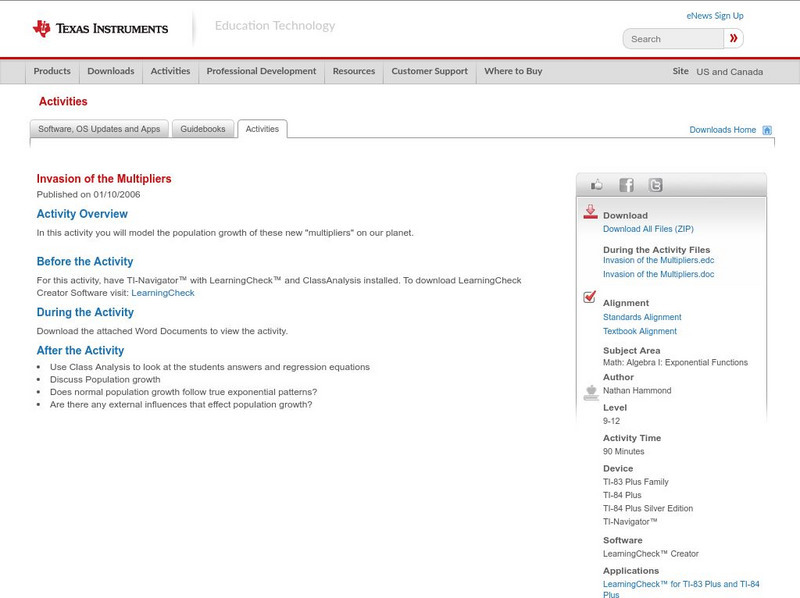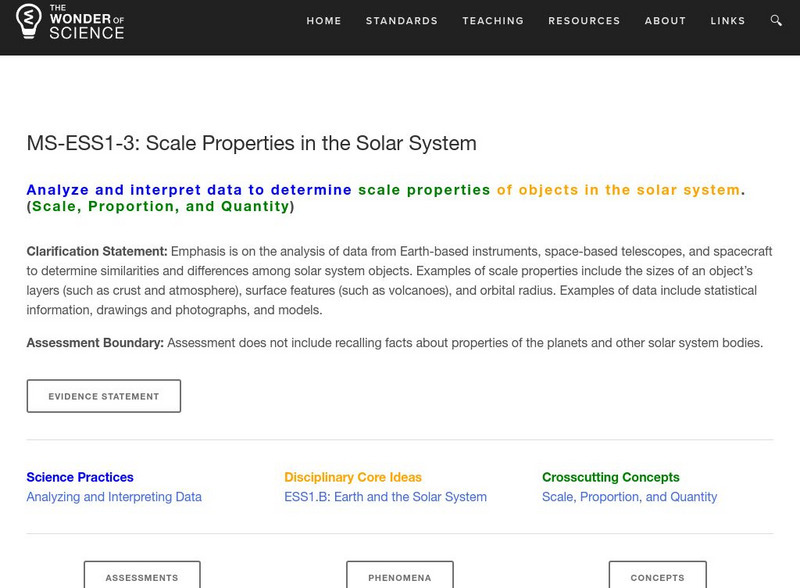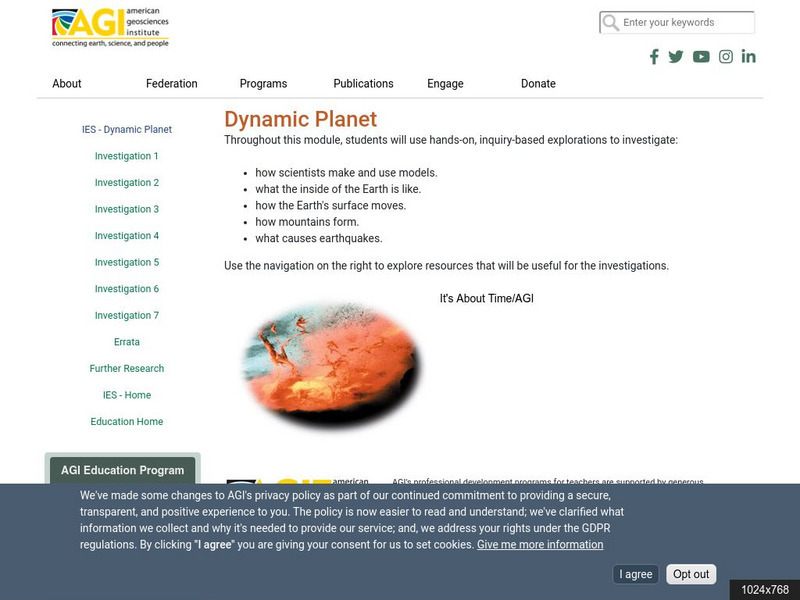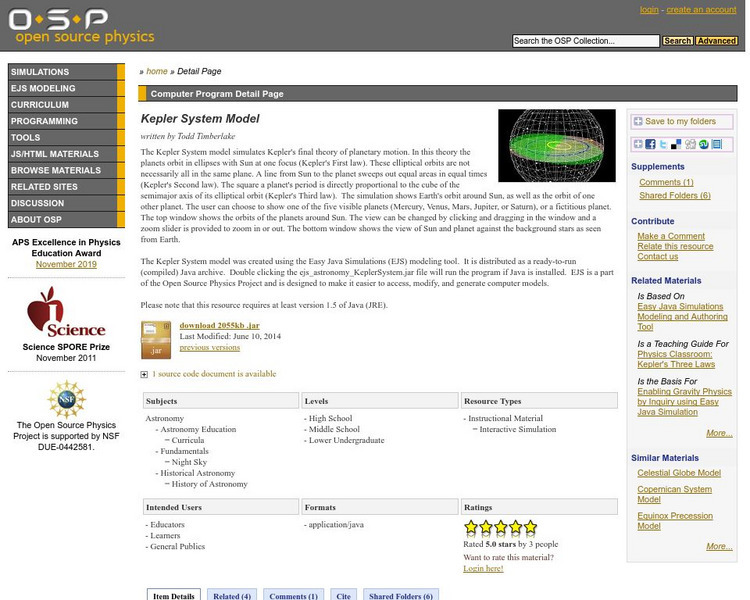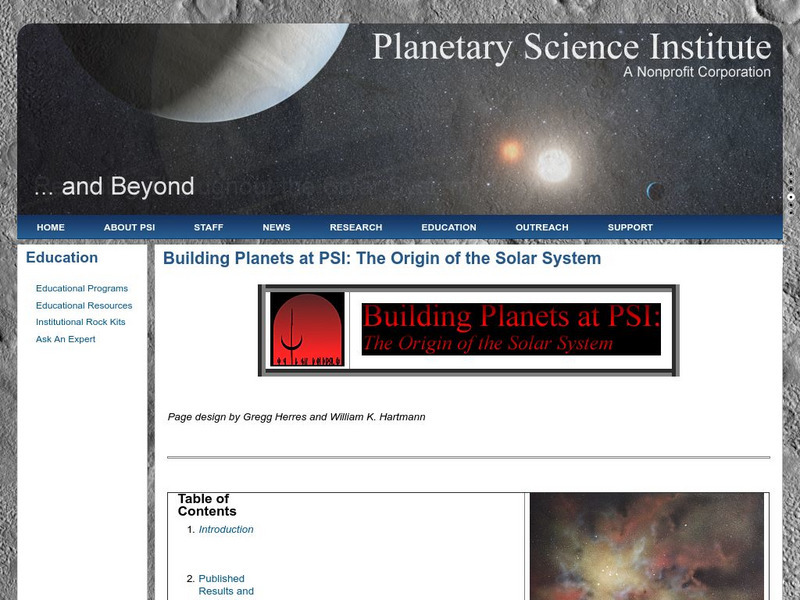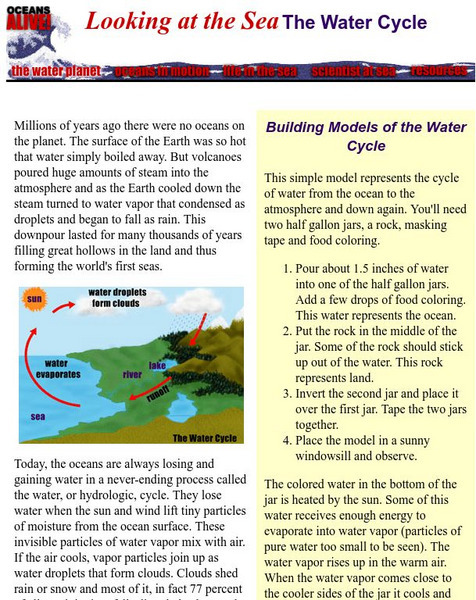Hi, what do you want to do?
Curated OER
Landforms in a Tub
Fifth graders use common household items to build landforms and simulate weathering and erosion.
Curated OER
Fostering Geospatial Thinking: Space to Earth: Earth to Space (SEES)
Students locate and access data to help them with their science inquiry. In this geographical positioning lesson students evaluate and compare data sets.
Curated OER
Attributes of Renewable Energy: From Nanopossibilities to Solar Power
Students explore solar energy, why we use it and how we use it. In this renewable energy instructional activity students compare active and solar techniques.
Curated OER
Global Warming
For this global warming worksheet, students complete multiple choice questions about global warming. Students complete 5 questions total.
Curated OER
Having Fun Working with Fractions
Students participate in various activities that increase their understanding of and ability to solve problems with fractions.
Curated OER
Lines, Segments, and Rays
Fifth graders use their arm, toothpicks, and marshmallows to create lines, segments, and rays. In this lines, segments, and rays lesson plan, 5th graders learn how these appear on a plane.
Curated OER
Using Cause and Effect to Write in Science
Fifth graders brainstorm processes or forces that cause Earth's surface to be changed.
Curated OER
Guess Your Best
Students discuss situations when it is useful to know exact weight of object as opposed to estimated weight, estimate weight of various items, weigh them on scale using ounces and pounds, and compare their weights on Guess Your Best...
PBS
Pbs Learning Media: Scaled Images of the Solar System
Use the following lithographs to envision the scale of our solar system. View different models of planets at different scales, an infographic about the relative sizes of the planets and distance from the sun, and images of the largest...
American Association of Physics Teachers
Com Padre Digital Library: Open Source Physics: Superior Ptolemaic Model
A simulation illustrating Ptolemy's geometrical system of explaining the varying speeds and directions of the planets, sun, and moon.
Science Education Resource Center at Carleton College
Serc: Choosing Between Home Appliances: Benefits to the Planet and Your Wallet
Learners compare various options for purchasing new home appliances by comparing the energy usage of more efficient models to less energy efficient models. They calculate the payback period in cases for which the purchase price for the...
PBS
Pbs Learning Media: Solar System Scale Model
Teach the concept of scale models and the size of the solar system through this extensive lesson plan. Students will learn about scale models, estimate which objects to use to create a scale model of Earth and Sun, and figure out how far...
Science Education Resource Center at Carleton College
Serc: Planets Made Real: Creating Size and Distance Scale of Planets
An activity where students build a scale model of the solar system based on a marble they pick from a bowl. After choosing a marble that represents Earth, students must calculate the size of the other planets and the sun. Site includes...
University of Wisconsin
The Why Files: A Climate of Extremes
Higher temperatures are only part of the climate-change forecast. Are current extreme weather events a sign that warming is already here? What do climate models forecast for weather around the globe? Why is it so hard to predict the...
Other
Making a Scale Model of the Solar System
For this lesson plan site, students are asked to construct a scale model of the planets to help visualize the relative size of planets and their relative distance from the Sun. Links are provided to the Sun and the planets which contain...
Khan Academy
Khan Academy: Activity: Scale of the Universe on a String
This activity will help your students comprehend the huge scales of time and space by using familiar objects. You can explore the massive distances of our Solar System using scale models made out of string. Included is a scale model of...
Sophia Learning
Sophia: The Solar System
A podcast explaining a model of the solar system which students can visualize, or even try to recreate. [1:38]
Texas Instruments
Texas Instruments: Invasion of the Multipliers
In this activity you will model the population growth of these new "multipliers" on our planet.
The Wonder of Science
The Wonder of Science: Ms Ess1 3: Scale Properties in the Solar System
Work samples, phenomena, assessment templates, and videos that directly address standard MS-ESS1-3: scale properties in the solar system.
American Geosciences Institute
American Geosciences Institute: Dynamic Planet
Seven hands-on lessons module where students learn about our dynamic planet. These inquiry-based explorations investigate scientific models, earthquakes and seismic waves, Earth's interior, Earth movements, the lithosphere, plate...
American Association of Physics Teachers
Com Padre Digital Library: Open Source Physics: Kepler System Model
This site from Open Source Physics offers a file with a simulation of Kepler's theory of planetary motion, tested with the Earth rotating around the sun and another planet of the user's choosing. The download requires Java.
Other
Planetary Science Institute: Building Planets at Psi
An article about the Planetary Science Institutes's advanced computer software, which it uses to model the way the solar system may have formed. Includes some insights into the results already obtained.
Museum of Science
Oceans Alive: The Water Planet
Check out this simple overview of the water cycle and learn how to build a model of the water cycle.
Math Planet
Math Planet: Algebra 1: Writing Linear Equations Using the Slope Intercept Form
Explains what the slope-intercept form is and how to find the equation of a line given two points on it. Includes modeled video lesson. [3:32]

















